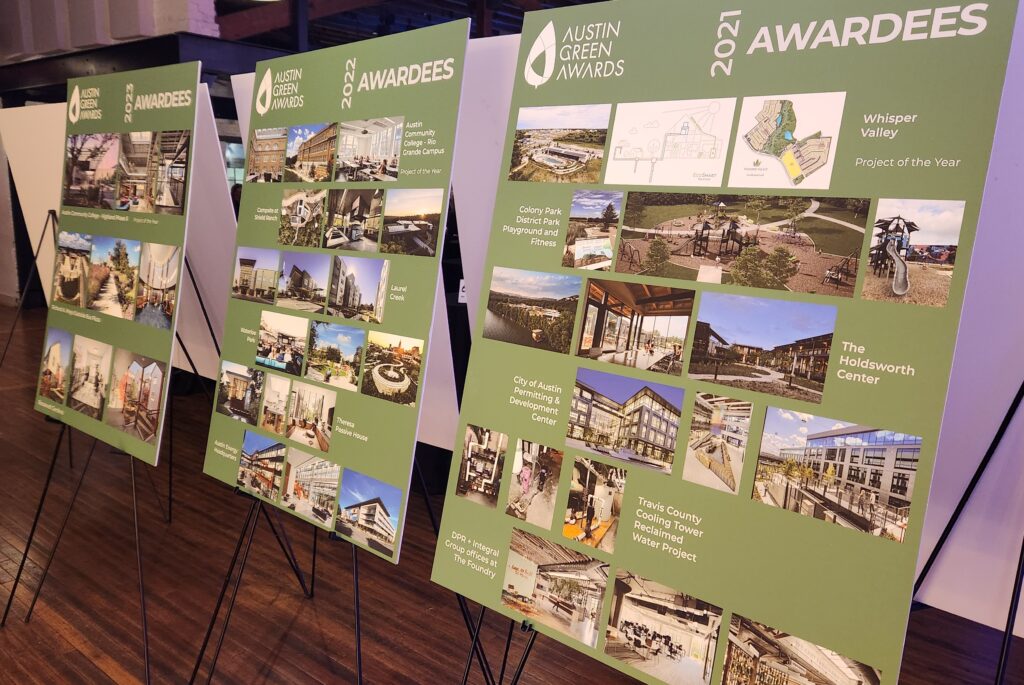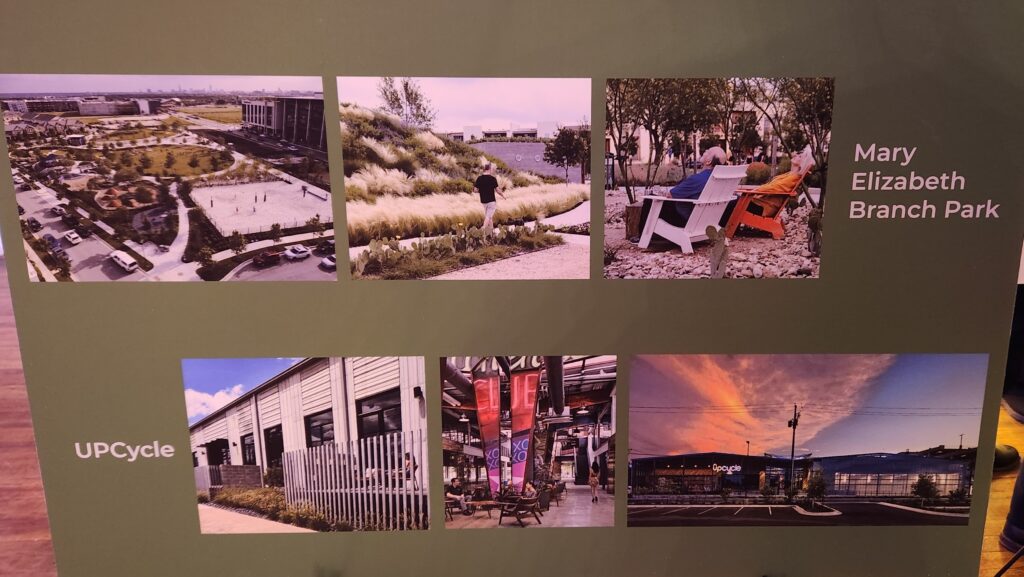Austin’s sustainability and design community gathered on November 12th to celebrate a milestone year for the 10th annual Austin Green Awards—an evening dedicated to recognizing the innovative, resilient, and equitable projects shaping the Austin area. As someone deeply engaged in environmental communications and community outreach, attending this year’s ceremony felt like stepping into a room full of ambition and inspiration, where creative problem-solving and sustainable design come together to reimagine what’s possible for our growing region.
The Austin Green Awards were created to honor exemplary achievements that push beyond conventional design and demonstrate how the built environment can enhance ecosystems, support community wellness, and strengthen resilience. This year’s event not only highlighted the evolution of sustainable thinking in Austin but also showcased two standout projects demonstrating what thoughtful, future-focused design truly looks like.
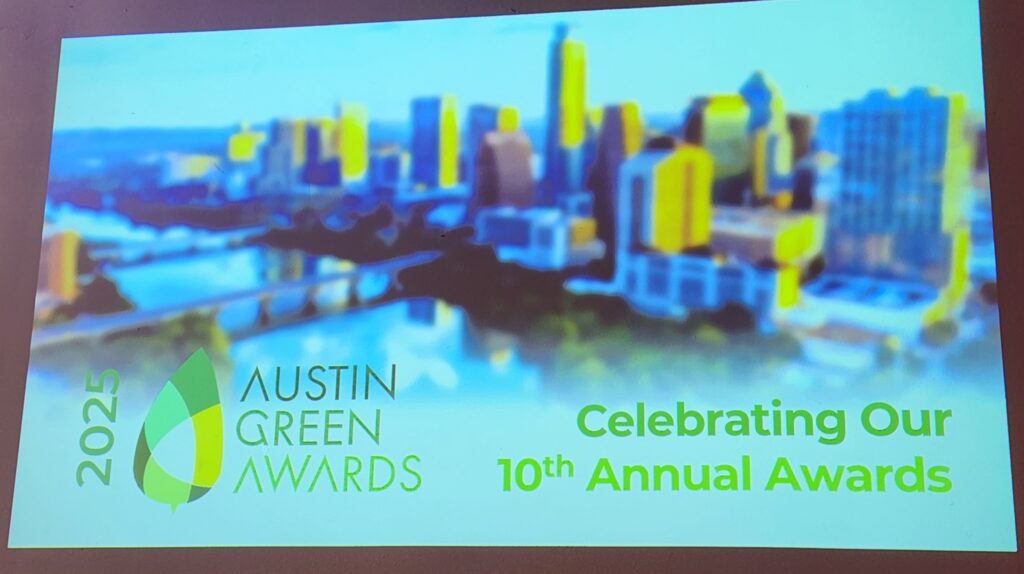
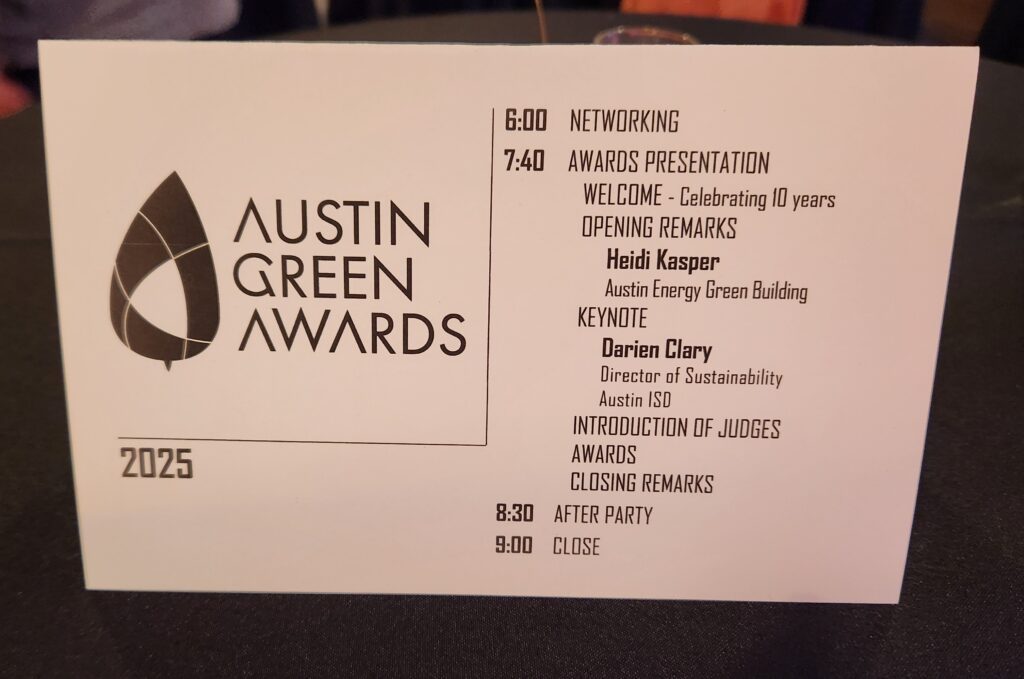
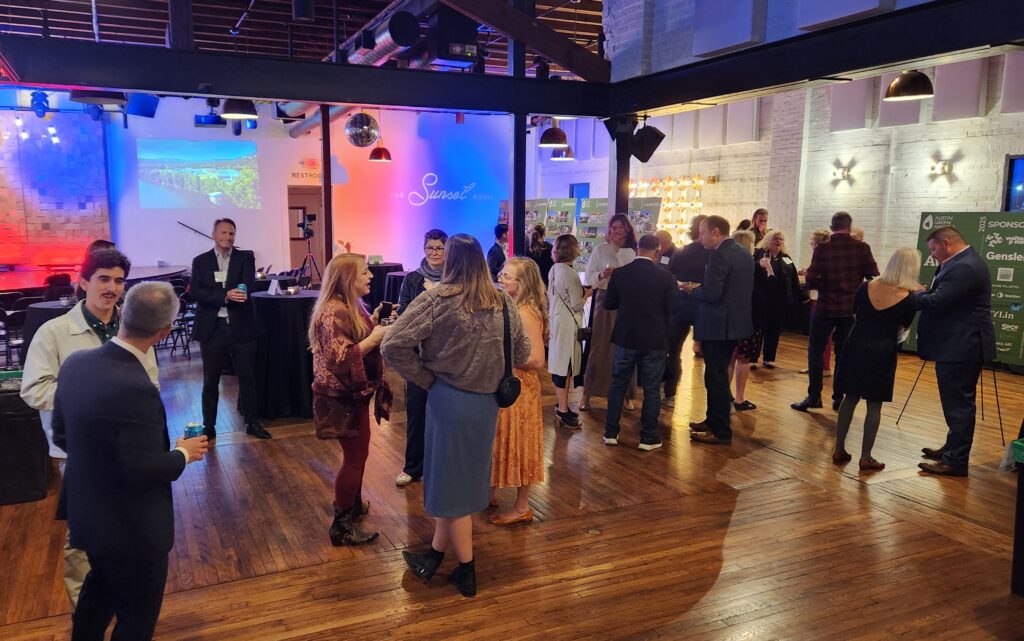

Recognizing Two Exemplary Projects
Eastside Early College High School
Submitted by Perkins&Will for Austin ISD
One of this year’s awardees, Eastside Early College High School, represents a powerful example of how educational environments can be transformed through sustainability-centered design. The project delivers more than a learning space, it creates a vibrant, supportive ecosystem for students, staff, and the surrounding community. With design strategies emphasizing daylighting, healthy materials, outdoor learning, water conservation, and a campus layout rooted in equity and access, the project sets a new standard for how district facilities can uplift both academic success and environmental stewardship. It’s a project that shows how design can shape not just a school, but a sense of belonging and opportunity.
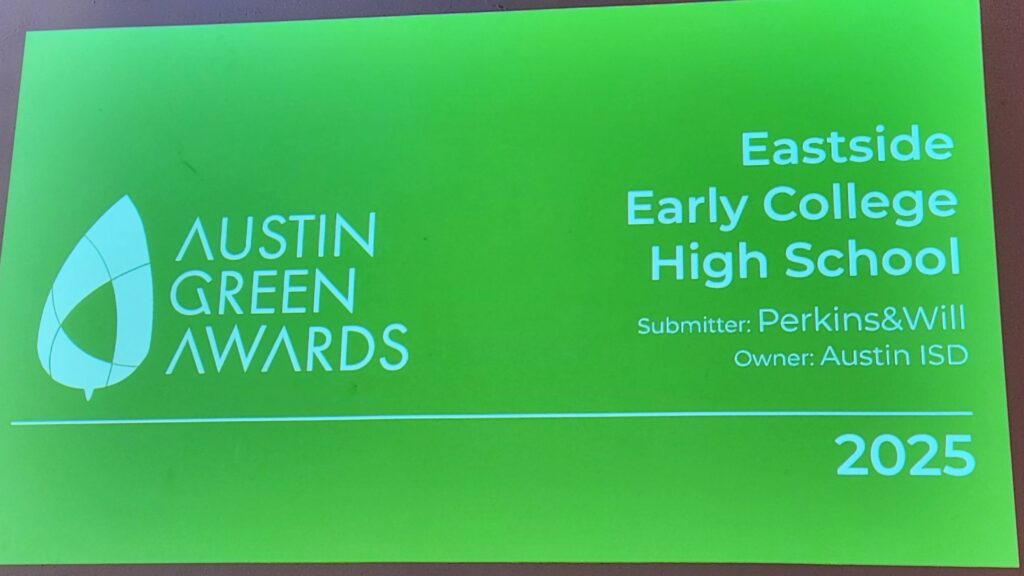

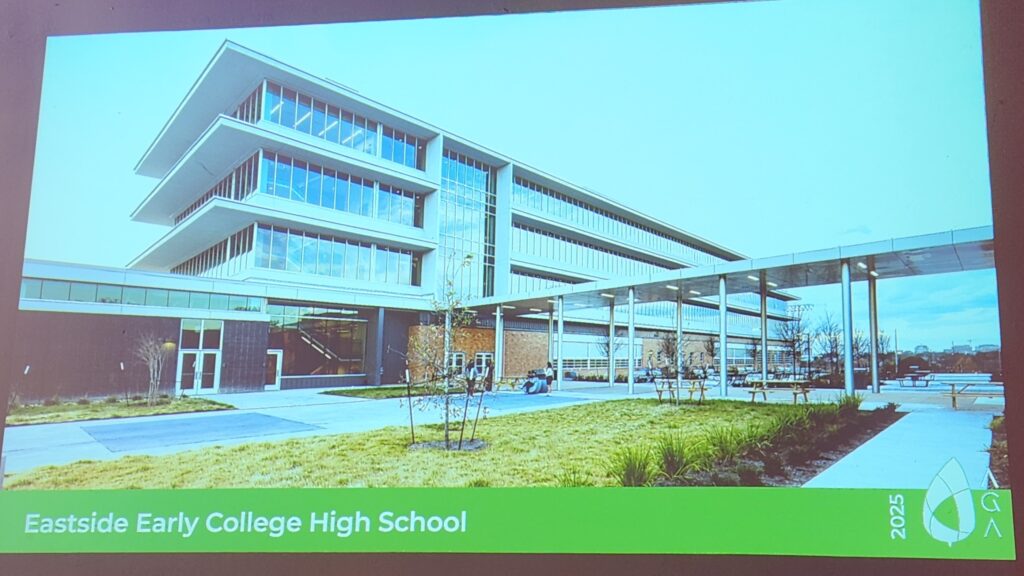

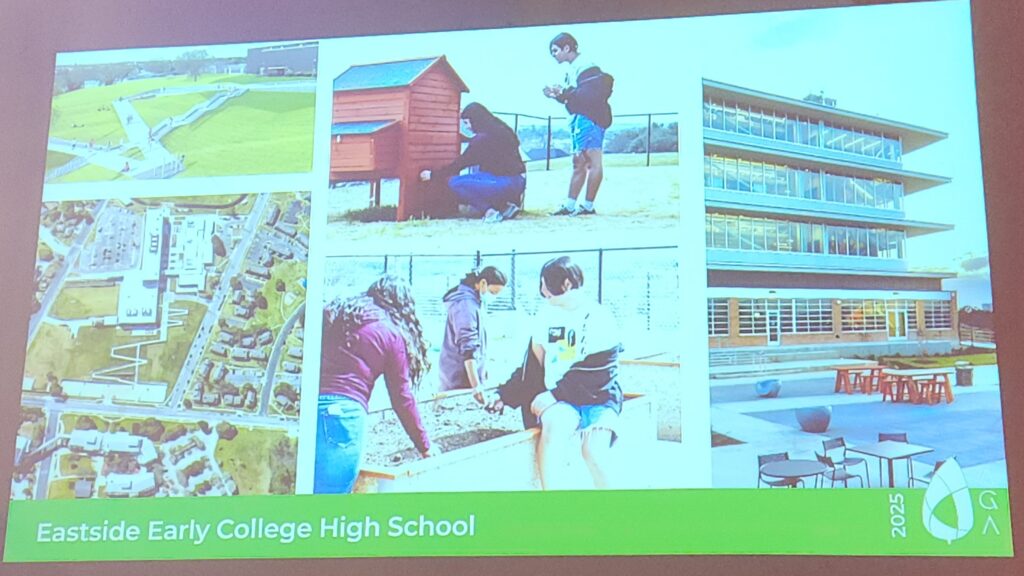
Fifth + Tillery
Submitted by Gensler for CapMetro
Also recognized this year was Fifth + Tillery, a transformative development for CapMetro that embraces Austin’s connection to nature while demonstrating the potential of sustainable placemaking. Featuring biophilic design principles, efficient systems, and a strong emphasis on communal spaces, the project blurs the boundaries between indoors and outdoors, creating a rich environment for collaboration and innovation. With climate-responsive architecture, thoughtful material choices, and a strategic site approach, Fifth + Tillery illustrates how design can serve organizations, employees, and the wider community while keeping environmental performance at the forefront.
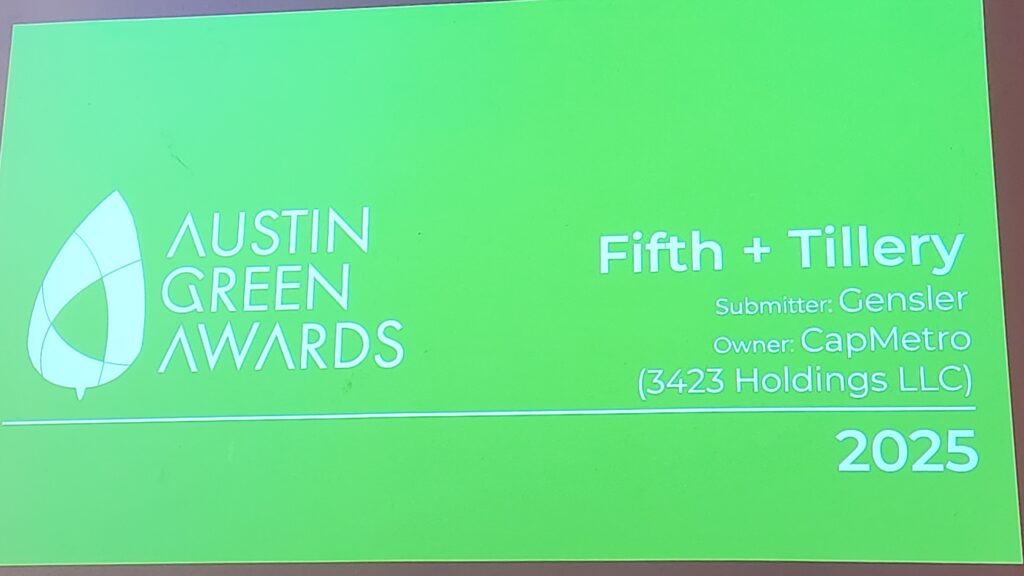
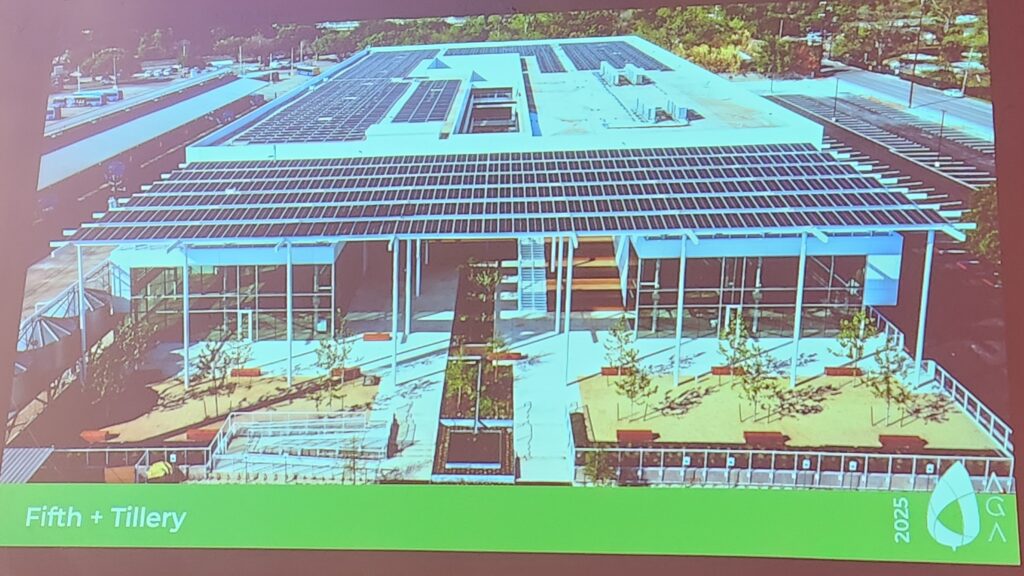



Both projects reflect the heart of what the Austin Green Awards stands for: creativity, resilience, and the belief that design can meaningfully enhance both human and ecological systems.
A Decade of Impact and Innovation
Celebrating ten years of the Austin Green Awards marks an important milestone for the program. What began as a collaborative vision from leaders at Gensler, Walter P Moore, ICON, and the Center for Maximum Potential Building Systems has grown into one of Austin’s most respected platforms for highlighting forward-thinking sustainable design.
This year’s opening remarks underscored one message that resonated deeply with me: the promise of Austin’s future is shaped by every person on every project team. Whether through design, engineering, policy, communications, planning, or community engagement, everyone contributes to building a healthier city. That collective responsibility, and the collaborative spirit behind it, is exactly why events like this matter.


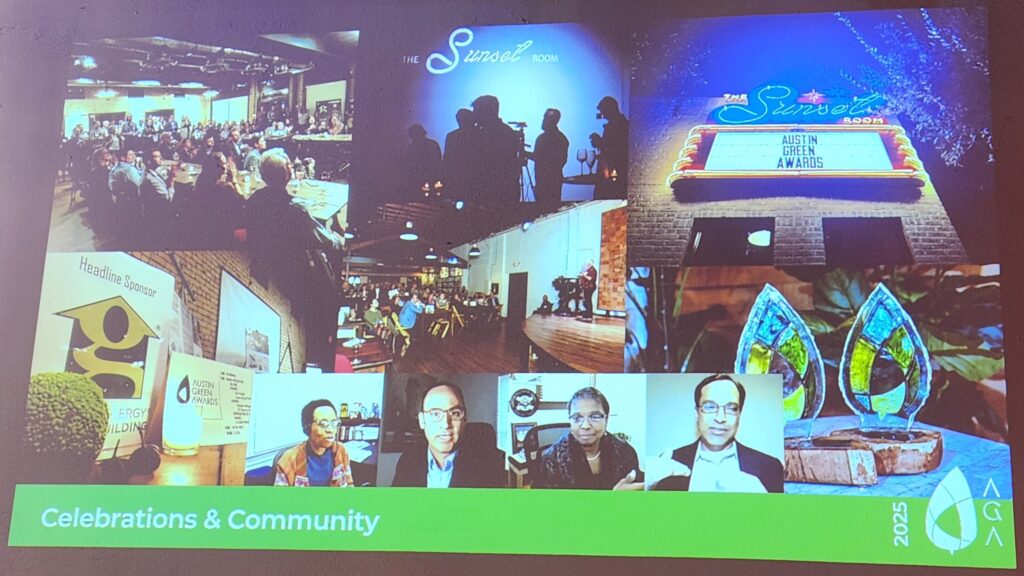
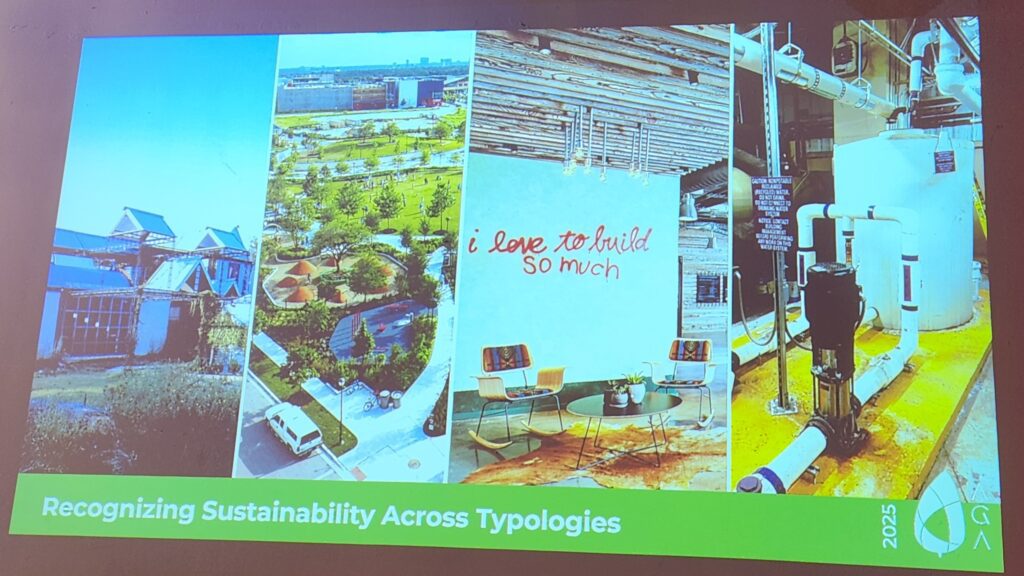
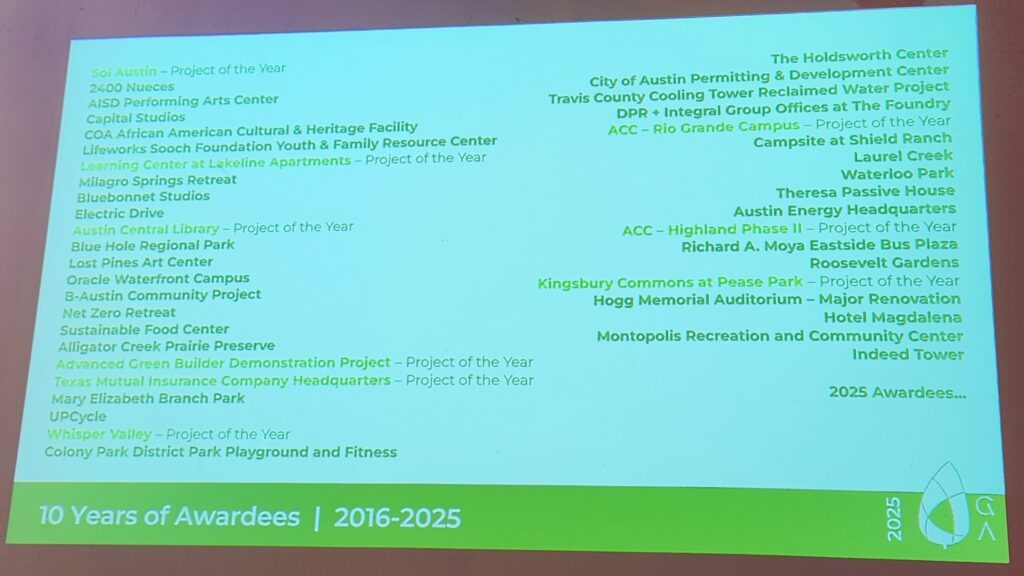
A Framework Rooted in Real Impact
The Austin Green Awards evaluates submissions across a robust sustainability framework aligned with global and national benchmarks, including the UN Sustainable Development Goals and the AIA Framework for Design Excellence. Projects are assessed across:
- Site ecosystem services and landscape performance
- Water conservation and responsible management
- Energy efficiency and renewable strategies
- Materials, reuse, and circularity
- Health, wellness, and occupant experience
- Equity, community engagement, and cultural relevance
- Operational planning and economic performance
- Resilience and long-term adaptability
These guiding criteria ensure that the awardees represent not just beautiful spaces, but holistic sustainability—design that considers people, planet, and the long-term future of our city.
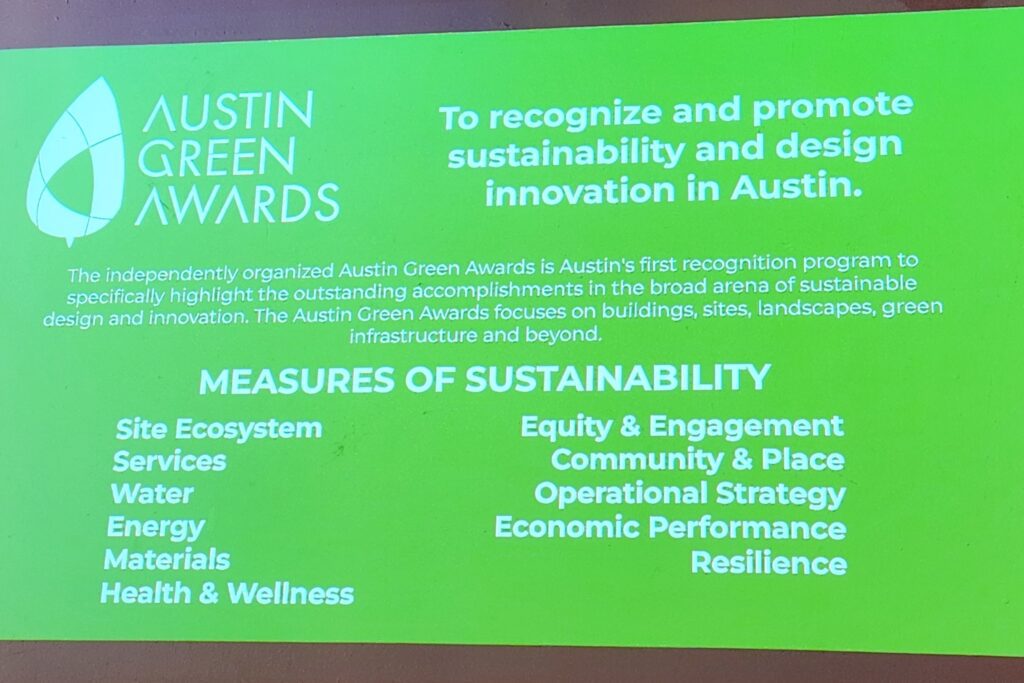

An Inspiring Night of Connection and Conversation
The room was full of energy, filled with architects, designers, engineers, planners, community advocates, academics, and sustainability professionals. Conversations wove through topics like stormwater systems, green infrastructure, equitable placemaking, regenerative landscapes, green transit-oriented development, and material innovation. It was refreshing to be part of a community where passion, creativity, and technical expertise intersect so naturally.
Events like this remind me why Austin remains a national leader in sustainable design—and how powerful it is when cross-sector voices come together to share solutions and celebrate progress.
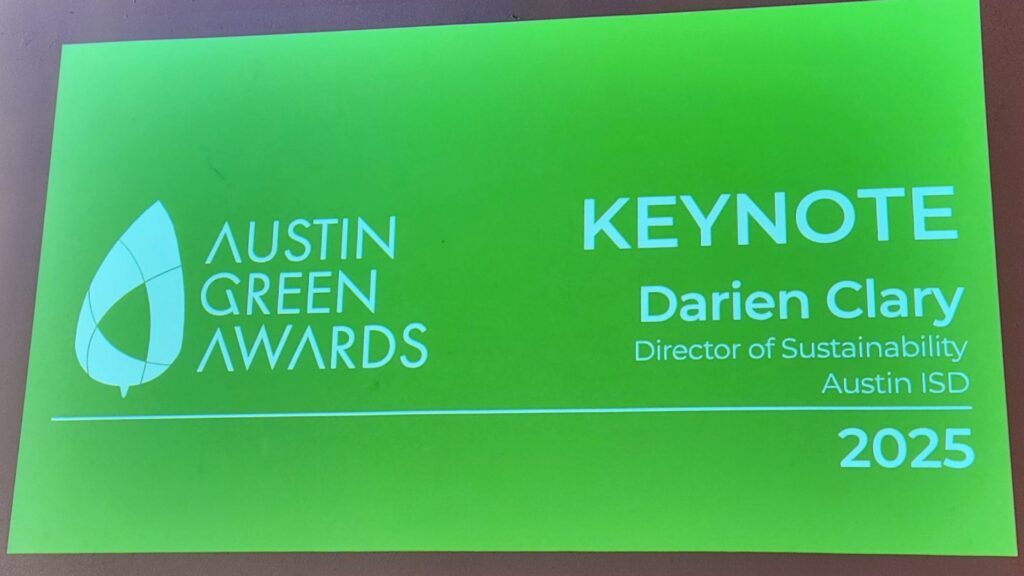
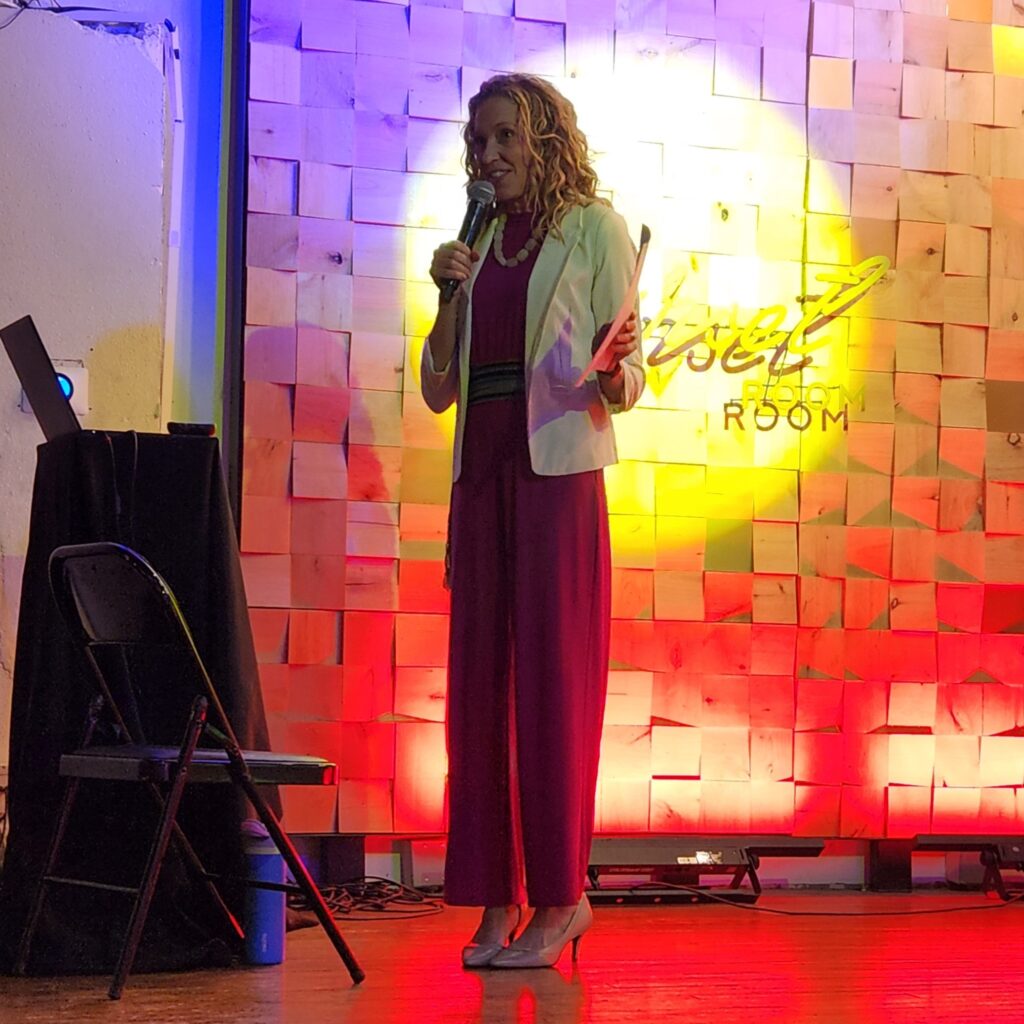


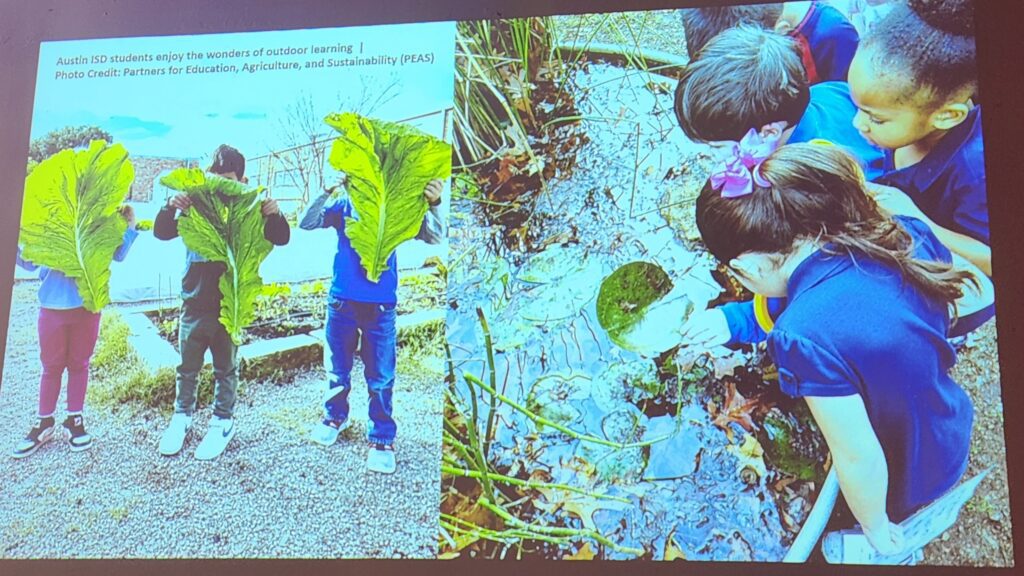
Looking Ahead
Leaving the event, I felt excited about the future, by the vision behind this year’s award-winning projects and the broader community that continues to move sustainability forward in Central Texas. Both Eastside Early College High School and Fifth + Tillery showcase what’s possible when design reflects not only environmental responsibility, but also the needs and aspirations of the people who interact with these spaces every day.
The Austin Green Awards offer a tangible glimpse into the next decade of sustainable innovation, collaboration, and community-driven progress. I’m grateful to be part of a region where this work is not just supported, but celebrated.
Here’s to continuing the momentum, uplifting meaningful projects, and building a more resilient and regenerative Austin for all.
